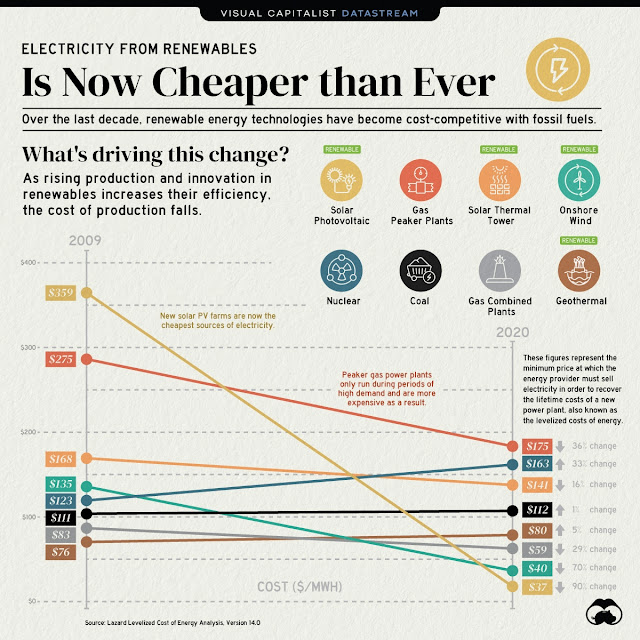But first, a news flash: DONALD TRUMP FOUND GUILTY. E. JEAN CARROL IS AWARDED $5 MILLION. What will this mean to his presidential candidacy? Well, the worst is yet to come. Democrats will try to delay any further prosecution of this heel, for they want him to screw up the Republican Party.
My very first posting occurred on 29 April 2008. It was entitled SIMPLE SOLUTIONS for Planet Earth and Humanity, the title of this blog. I said:Some relative costs per gallon:
Gasoline in USA $ 3.50
Gasoline in Hong Kong $ 7.50 (similar to Europe)
Scope Mouthwash $ 15.00
Gallon of Beer in Restaurant $ 20.00
Evian (naïve backwards) $ 21.00
Brake Fluid (mostly oil) $ 34.00
Johnny Walker Black Label Scotch $ 160.00
Vick’s Nyquil $ 180.00
Channel #5 Perfume $4000.00
Computer printer ink $5000.00
- If you scroll down the right column, you can see that at this moment WTI Crude Oil is $73.16 ($1.74/gallon), or $36.84/barrel cheaper than 15 years ago.
- Also, throughout Europe today, gasoline costs around $5.50/gallon, $2/gallon cheaper than in 2008.
- Incidentally, 15 years later, a gallon of Johnny Walker Black Label costs around $172, or a little more expensive than in 2008, although depending on where you go, you can also here and there find it for about $160/gallon.
I also said: Green Energy Would Be Cost Competitive…If Polluters Were Charged for Dumping Carbon Dioxide into Your Atmosphere.
Electricity from coal and nuclear sources costs about 3 to 4 cents / kWh to produce. Under ideal conditions, wind power and geothermal energy electricity is in the range of 4 to 6 cents/kWh. Solar photovoltaic electricity is today more than 20 cents/kWh, and even with the latest Nanosolar thin film development, will exceed 10 cents/kWh, although utility scale facilities show promise.
Any changes in 15 years? If you read this Energy Information Agency report of the Department of Energy you will be totally confused. So at random I picked Table 4b:
Cents/kWh
Advanced nuclear $0.08
Coal $0.04 to $0.09, the lower cost are old plants,
carbon control more than doubles the cost
Geothermal $0.04
Biomass $0.09
Wind, onshore $0.04
Wind, offshore $0.11
Solar, standalone $0.03
Solar, hybrid $0.05
Residential PV $0.15
Hydroelectric $0.06
Battery storage $0.13
The above data are spotty. So is the info from Wikipedia. This is because every project, at home or utility-scale, depends on the wind conditions for wind energy, clouds for solar energy and other factors.
Cents/kWh
PV fixed axis, utility $0.028 to 0.11
PV residential $0.13 to 0.22
Wind onshore $0.03 to $0.05
Wind offshore $0.08 to 0.12
Hydroelectric $0.02 to 0.07
Geothermal $0.06 to 0.10
Coal, carbon cap. $0.06 to 0.15
Natural gas, peak $0.05 to 0.07
Exactly 15 years ago, my 9 May 2008 posting was: Oil Prices Hit New High.
- Petroleum rose to $126.04/barrel that day.
- Went to $134/barrel in June of 2008, but collapsed to $41/barrel in December.
- Arab members of the Organization of Petroleum Exporting Countries (OPEC) imposed an embargo against the U.S. in retaliation for our decision to help Israel, causing the first crisis in October of 1973. That red line is the inflation adjusted oil price, where the jump was from $24/bbl to $55/bbl. The real prices then were approximately from $3/bbl to $10/bbl. The stock market tumbled.
- Then came the second Energy Crisis in 1979, where oil rose from $66/bbl to $149/bbl. This was caused by our political problems with Iran, where much of the world also suffered long gasoline lines.
- Both inflation and stagflation occurred, causing unemployment to increase.
- In other words, politics and the price of oil had much to do with world economic conditions.
- Note that the price of oil began to jump from 2007, reaching this "inflation-adjusted" high of $174/bbl in June of 2008. Guess what caused the Great Recession? Oil prices triggered everything. Sure the banks and stock market reaction are what we see, but most don't blame oil for our economic problems.
- I wrote a paper a few decades ago tracing how unemployment rates for the U.S. and world followed the increase in oil prices.
- From kindergarten through high school graduation takes 13 years.
- Thus, my blog length equivalence began as a kindergartener, and I'm today just about to start my junior in college.
- Just 15 years doesn't mean much to most. But recalling how long it took from starting school to being in college is almost traumatic.
- But, when you go to school, you have weekends off, plus the the various holidays and spring/summer periods when you don't go to school.
- I have been doing this, with rare exceptions, for 5476 straight days.
-
















Comments
Post a Comment